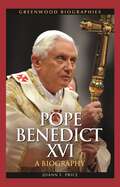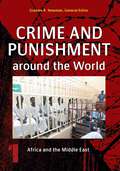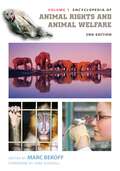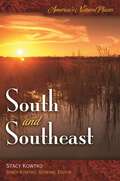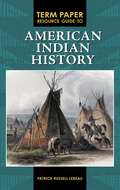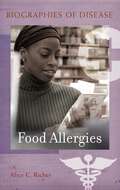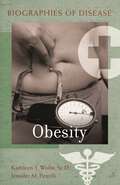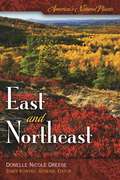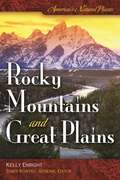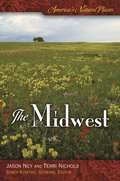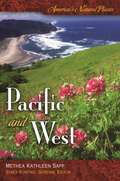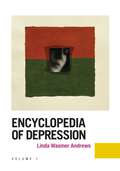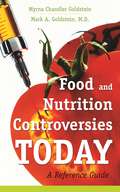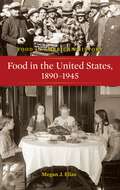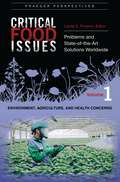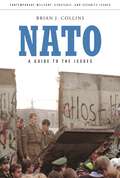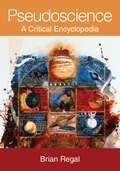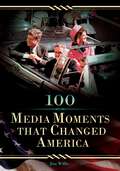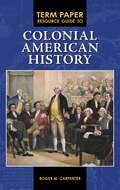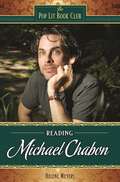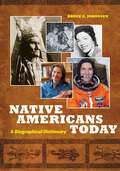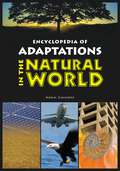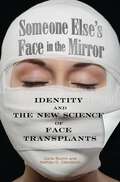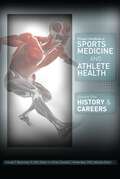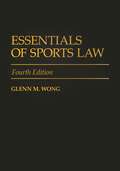- Table View
- List View
Pope Benedict XVI: A Biography (Greenwood Biographies)
by Joann F. PriceThis comprehensive biography of Pope Benedict XVI emphasizes his theological positions and contributions as a theologian.Pope Benedict XVI: A Biography is an incisive exploration of the life and career of the current head of the Roman Catholic Church, with an emphasis on his theological positions and contributions as a theologian. Written by a Catholic priest who is an expert on Bavarian theology, the book looks at Benedict's family life, his teen years in Nazi Germany, his rise in the Church, and the beliefs that shape his Papacy.Readers of this biography will learn that, in addition to his native German, Benedict XVI speaks Italian, French, English, Spanish, and Latin fluently, has a knowledge of Portuguese, and can read ancient Greek and biblical Hebrew. They will discover that he plays the piano and is very fond of cats. Perhaps surprisingly, they will find that during the time of the Second Vatican Council, the Pope was viewed as a reformer, and that he continues to regard himself as a supporter of the Council's teaching, holding, however, that those teachings have been widely misinterpreted. All this and more make for a fascinating—and instructive—reading experience.
Crime and Punishment around the World [4 volumes]: [4 volumes]
This comprehensive, detailed account explores crime and punishment throughout the world through the eyes of leading experts, local authors and scholars, and government officials.It is a subject as old as civil society, yet one that still fuels debate. Now the many and varied aspects of that subject are brought together in the four-volume Crime and Punishment around the World. This unprecedented work provides descriptions of crimes—and the justice systems that define and punish them—in more than 200 nations, principalities, and dependencies. Each chapter examines the historical, political, and cultural background, as well as the basic organization of the subject state's legal and criminal justice system. It also reports on the types and levels of crime, the processes leading to the finding of guilt, the rights of the accused, alternatives to going to trial, how suspects are prosecuted for their crimes, and the techniques and conditions of typical punishments employed. Comprising a study that is at once extraordinarily comprehensive and minutely detailed, the essays collected here showcase the variety and the universality of crime and punishment the world over.
Encyclopedia of Animal Rights and Animal Welfare [2 volumes]: [2 volumes]
A landmark publishing achievement on the subject, the new edition of this acclaimed encyclopedia is expanded to two volumes, covering the full range of issues related to animal protection.Expanded to two volumes, the comprehensively updated new edition, Encyclopedia of Animal Rights and Animal Welfare: Second Edition is an extraordinary publishing event. It remains the only reference to cover the entire scope of animal rights and welfare from a global interdisciplinary perspective, with an international team of contributors assembled by Marc Bekoff covering animal treatment issues in the United States, China, India, Kenya, Australia, and many other nations. With a focused emphasis on fairness and justice for animals evident on every page, Encyclopedia of Animal Rights and Animal Welfare: Second Edition offers clear explanations of hot-button topics like puppy mills, endangered species in zoos, no-kill shelters, dog fighting, factory farming and disease, veganism, conservation ethics, wildlife contraception, and more. The encyclopedia also explores a range of religious, ethical, and philosophical views on using animals, as well as the latest research on animal cognition and sentience. The work helps readers understand the different viewpoints of animal welfare advocates who want to improve conditions for animals and animal rights activists who don't want animals used at all.
America's Natural Places: South and Southeast (America's Natural Places)
by Stacy S. KowtkoFrom the Texas Blackland Prairies to the Middle Atlantic Coastal Plain of the Carolinas, this volume provides a snapshot of the most spectacular and important natural places in the southern United States.America's Natural Places: South and Southeast examines over 50 of the most spectacular and important areas of this region, with each entry describing the importance of the area, the flora and fauna that it supports, threats to the survival of the region, and what is being done to protect it. Organized by state within the volume, this book informs readers about the wide variety of natural areas across the south and southeast and identifies places near them that demonstrate the importance of preserving such regions.
Term Paper Resource Guide to American Indian History (Term Paper Resource Guides)
by Patrick LeBeauMajor help for American Indian History term papers has arrived to enrich and stimulate students in challenging and enjoyable ways. Students from high school age to undergraduate will be able to get a jump start on assignments with the hundreds of term paper projects and research information offered here in an easy-to-use format. Users can quickly choose from the 100 important events, spanning from the first Indian contact with European explorers in 1535 to the Native American Languages Act of 1990. Coverage includes Indian wars and treaties, acts and Supreme Court decisions, to founding of Indian newspapers and activist groups, and key cultural events. Each event entry begins with a brief summary to pique interest and then offers original and thought-provoking term paper ideas in both standard and alternative formats that often incorporate the latest in electronic media, such as iPod and iMovie. The best in primary and secondary sources for further research are then annotated, followed by vetted, stable Web site suggestions and multimedia resources, usually films, for further viewing and listening. Librarians and faculty will want to use this as well.With this book, the research experience is transformed and elevated. Term Paper Resource Guide to American Indian History is a superb source to motivate and educate students who have a wide range of interests and talents. The provided topics typify and chronicle the long, turbulent history of United States and Indian interactions and the Indian experience.
Food Allergies (Biographies of Disease)
by Alice C. RicherMost people take eating for granted - but for some, eating can be downright dangerous. Thirty thousand Americans are hospitalized each year due to an allergic food reaction and peanut allergies in American children doubled from 1997 to 2002. Between two and ten percent of children are affected by food allergies worldwide and adverse food reactions increased hospital admissions by five hundred percent in the United Kingdom during the past two decades. Asthma cases, a reliable indicator of food allergy susceptibility, increased one hundred percent during the last thirty years. While most people assume they have a food allergy, only a very small percentage of cases are a true food allergy. For reasons still unknown, the human immune system reacts abnormally to certain foods. However, medical disorders, increased globalization of the food supply, and an upsurge of processed and convenience foods that contain food additives may also cause adverse food reactions as well. Accurate diagnosis can be extremely tricky and many sufferers never learn what causes their symptoms.Why are adverse food reactions on the rise? How can an accurate diagnosis be made? Is it even possible to enjoy foods and stay safe and healthy? These are just some of the questions this book will answer while helping the reader to learn all they can about why adverse food reactions happen, distinguish between a true food allergy and a food hypersensitivity, and outline strategies to successfully manage and live with them.
Obesity (Biographies of Disease)
by Kathleen Y. Wolin Jennifer PetrelliAn overview written for general readers of the history, prevention, treatment, causes, and consequences of obesity.What makes obesity a disease instead of just a matter of overeating? What are the genetic and environmental factors behind it? What new breakthroughs are being developing to combat it? This concise, information-rich volume looks at these and other important questions, clearing away misconceptions about this devastating condition.Obesity explains what scientists now know about the causes and consequences of being overweight, including the latest on the links between obesity and heart disease, diabetes, some cancers, asthma, and sleep difficulties. The book pays specific attention to the problem among obese young people, who more and more are being diagnosed with chronic illnesses that used to only be seen in adults. It also reports on promising efforts to battle obesity, from medical treatments to community awareness programs.
America's Natural Places: East and Northeast (America's Natural Places)
by Donelle Nicole DreeseFrom Maine's Acadia National Park to Kentucky's Natural Bridge State Park Nature Preserve, this volume provides a snapshot of the most spectacular and important natural places in the East and Northeast.America's Natural Places: East and Northeast examines over 50 of the most spectacular and important areas of this region, with each entry describing the importance of the area, the flora and fauna that it supports, threats to the survival of the region, and what is being done to protect it. Organized by state within the volume, this work informs readers about the wide variety of natural areas across the east and northeast and identifies places that may be near them that demonstrate the importance of preserving such regions.
America's Natural Places: Rocky Mountains and Great Plains (America's Natural Places)
by Kelly EnrightFrom Rocky Mountain National Park in Colorado to the Tallgrass Prairie National Preserve in Kansas, this volume provides a snapshot of the most spectacular and important natural places in the Great Plains and Rocky Mountains.America's Natural Places: Rocky Mountains and Great Plains examines over 50 of the most spectacular and important areas of this region, with each entry describing the importance of the area, the flora and fauna that it supports, threats to the survival of the region, and what is being done to protect it. Organized by state within the volume, this work informs readers about the wide variety of natural areas across the Rocky Mountains and Great Plains and identifies places that may be near them that demonstrate the importance of preserving such regions.
America's Natural Places: The Midwest (America's Natural Places)
by Jason Ney Terri NicholsFrom Iowa's Decorah Ice Cave to the Kitty Todd Nature Preserve in Ohio, this volume provides a snapshot of the most spectacular and important natural places in the Midwestern United States.America's Natural Places: The Midwest examines over 50 of the most spectacular and important areas of this region, with each entry describing the importance of the area, the flora and fauna that it supports, threats to the survival of the region, and what is being done to protect it. Organized by state within the volume, this work informs readers about the wide variety of natural areas across the Midwest and identifies places near them that demonstrate the importance of preserving such regions.
America's Natural Places: Pacific and West (America's Natural Places)
by Methea K. SappFrom Alaska's Arctic National Wildlife Refuge to the Milnesand Prairie Preserve of New Mexico, this volume provides a snapshot of the most spectacular and important natural places in the western United States.America's Natural Places: Pacific and West examines over 50 of the most spectacular and important areas of this region, with each entry describing the importance of the area, the flora and fauna that it supports, threats to the survival of the region, and what is being done to protect it. Organized by state within the volume, this work informs readers about the wide variety of natural areas across the western part of the United States and identifies places that may be near them that demonstrate the importance of preserving such regions.
Encyclopedia of Depression [2 volumes]: [2 volumes]
by Linda Wasmer AndrewsWritten in clear, nontechnical language, and filled with lively historical and cultural highlights, this comprehensive reference work is a scientifically grounded yet thoroughly readable introduction to depressive disorders.What distinguishes normal everyday emotional swings from debilitating, clinically identified depression? What are the defining symptoms, manifestations, and treatments? What is life like for people suffering from depression and for those who care for them? The Encyclopedia of Depression is for all those needing answers to questions like these—individuals, families, health professionals, or anyone fascinated by this pervasive condition.Written in clear, nontechnical language and highlighting fascinating historical and cultural perspectives on the topic, this two-volume resource presents a complete contemporary portrait of depressive disorders, summarizing the latest scientific, medical, and societal thinking on a wide variety of depression-related topics. Coverage includes causes, risk factors, symptoms, diagnosis and prevention, and a wide range of treatment options, including psychotherapy, medication, biological treatments, alternative therapies and lifestyle approaches. In addition, the encyclopedia discusses historical and cross cultural perspectives on the condition, including the dramatic shifts in public awareness and cultural attitudes toward the disease and the devastation it can cause.
Food and Nutrition Controversies Today: A Reference Guide
by Myrna Chandler Goldstein Mark A. MDIs any food safe? Will mad cow disease kill us all? How many calories are really in your restaurant Caesar salad? Modern consumers are besieged with conflicting messages about food and nutrition, making it difficult for the lay person to know what to believe. This no-nonsense resource explores the latest controversies in the field of food and nutrition, presenting readers with the varying opinions and underlying facts that fuel these debates. Fifteen chapters focus on hot topics like organic food, bottled water, and deadly bacterial outbreaks as well as lesser known issues such as food irradiation, vitamin supplementation, animal growth hormones, and more.One of the few resources of its kind, this informative reference is perfect for high school and college students and the conscientious consumer. Since most books on food and diet approach the issues with a clear agenda, this work's unbiased tone and evenhanded treatment of information make it a particularly valuable tool. Features include a detailed index, 20 black and white illustrations, and a rich and deep bibliography of print and electronic materials useful for further research.
Food in the United States, 1890-1945 (Food in American History)
by Megan J. EliasNo American history or food collection is complete without this lively insight into the radical changes in daily life from the Gilded Age to World War II, as reflected in foodways.From the Gilded Age to the end of World War II, what, where, when, and how Americans ate all changed radically. Migration to urban areas took people away from their personal connection to food sources. Immigration, primarily from Europe, and political influence of the Caribbean, Latin America, and the Pacific brought us new ingredients, cuisines, and foodways. Technological breakthroughs engendered the widespread availability of refrigeration, as well as faster cooking times. The invention of the automobile augured the introduction of "road food," and the growth of commercial transportation meant that a wider assortment of foods was available year round. Major food crises occurred during the Depression and two world wars. Food in the United States, 1890-1945 documents these changes, taking students and general readers through the period to explain what our foodways say about our society. This intriguing narrative is enlivened with numerous period anecdotes that bring America history alive through food history.
Critical Food Issues [2 volumes]: Problems and State-of-the-Art Solutions Worldwide [2 volumes] (Non-ser.)
by Laurel Phoenix Lynn WalterThis authoritative, research-based collection examines urgent threats to future global food security and evaluates current and potential solutions.Critical Food Issues: Problems and State-of-the-Art Solutions Worldwide examines 31 crucial areas of concern, from soil degradation, depletion of water for irrigation, and loss of biodiversity to declining rural livelihoods, hunger and obesity, unjust farm labor practices, and farm animal mistreatment. Critical Food Issues divides its coverage into two exhaustive volumes, one on bioenvironmental topics and one with a sociocultural focus. Throughout, highly accomplished experts from a variety of academic backgrounds review the current state of research on specific problems, then identify strategies for confronting those problems that balance sustainable agrifood systems with environmental stewardship, healthy people, and equitable communities. At a time of increasing public outcries over the quality of food and the impact of agrifood production on long-term environmental and human well-being, Critical Food Issues offers an authoritative and comprehensive basis on which producers, consumers, and citizens can make more informed decisions about the future of food.
NATO: A Guide to the Issues (Contemporary Military, Strategic, and Security Issues)
by Brian J. CollinsThis superb introduction to NATO is written for the national security novice, yet is full of insights for the more seasoned hand interested in how and why NATO reached its current state.In the more than half-century since NATO was founded, there has been endless debate about its purpose, about whether it is meeting that purpose, and about the strategies it employs to that end. Speculation has also been rife about the organization's "imminent demise." Those questions and more are the subject of NATO: A Guide to the Issues.Covering the organization from its founding in 1949 through the present, the guide examines aspects of NATO that have undergone tremendous change over the years, including its purpose, military mission, geographic concept of operations, and membership. At the same time, it explores key aspects of NATO's organization that have remained constant. These include the ability of members to participate in operations as much or as little as they desire, decision-making by consensus, and a general belief that people from different countries working together on a daily basis promotes cooperation, understanding, and friendship.
Pseudoscience: A Critical Encyclopedia
by Brian RegalMore than just a collection of factual entries, this rich resource explores the difference between scientific and pseudoscientific pursuits in a way that spurs readers to ask questions and formulate answers.What makes science science? How do we tell which assertions, beliefs, and methods are scientifically sound, and which are not? Brian Regal's authoritative, entertaining new reference, Pseudoscience: A Critical Encyclopedia gets at the heart of these questions by helping readers understand how the scientific method works, how to critically analyze all kinds of "evidence," and how to sort through long-running myths and current pseudoscience controversies.Ranging from the dawn of history to the present and across world cultures, Pseudoscience uses a field of endless fascination as a means of driving home the importance of solid scientific reasoning. The encyclopedia spans the full spectrum of scientific and nonscientific pursuits, from chemistry, biology, psychology, and medicine to eugenics, religion, cryptozoology, the occult, and paranormal activities. Specific entries focus on general concepts of science, the lives of individuals, and claims of abilities. Throughout, these entries go beyond simply stating facts by constantly engaging readers in a discussion about the very nature of true scientific discovery.
100 Media Moments That Changed America
by Jim WillisFrom the launching of America's first newspaper to YouTube's latest phone-videoed crime, the media has always been guilty of indulging America's obsession with controversy. This encyclopedia covers 100 events in world history from the 17th century to the present—moments that alone were major and minor, but ones that exploded in the public eye when the media stepped in. Topics covered include yellow journalism, the War of the Worlds radio broadcast, the Kennedy-Nixon debates, JFK's assassination, the Pentagon papers, and Hurricane Katrina. These are events that changed the way the media is used—not just as a tool for spreading knowledge, but as a way of shaping and influencing the opinions and reactions of America's citizens. Thanks to the media's representations of these events, history has been changed forever. From classified military plans that leaked out to the public to the first televised presidential debates to the current military tortures caught on tape, 100 Media Moments That Changed America will demonstrate not only an ever-evolving system of news reporting, but also the ways in which historical events have ignited the media to mold news in a way that resonates with America's public. This must-have reference work is ideal for journalism and history majors, as well as for interested general readers.Chapters are in chronological order, beginning with the 17th century. Each chapter starts with a brief introduction, followed by media event entries from that decade. Each entry explains the moment, and then delivers specific details regarding how the media covered the event, America's response to the coverage, and how the media changed history.
Term Paper Resource Guide to Colonial American History (Term Paper Resource Guides)
by Roger M. CarpenterWith this guide, major help for term papers relating to Colonial American history has arrived in a volume sure to enrich and stimulate students in challenging and enjoyable ways.Chock full of stimulating and creative term paper suggestions and vetted research resources focusing on the Colonial Era, this volume is indispensable for students, librarians, and instructors. Students from high school age to undergraduate will use it to get a jumpstart on assignments in Colonial American history with the hundreds of term paper suggestions and research information offered here in an easy-to-use format. Users can quickly choose from the 100 important events, ranging from the first attempt at colonization at the Lost Colony of Roanoke, Virginia, in 1585 to the ratification of the Constitution in 1791.With this book, the research experience is transformed and elevated. Term Paper Resource Guide to Colonial American Historyis a superb source to motivate and educate students who have a wide range of interests and talents. Coverage includes key wars and conflicts, establishment of colonies and colleges, legislation and treaties, religious events, exploration, publications, and more.
Reading Michael Chabon (The Pop Lit Book Club)
by Helene MeyersThe world of Michael Chabon comes alive in the first full-length, analytical guide devoted to this brilliantly creative writer.Pulitzer Prize-winning author Michael Chabon is considered one of the most distinguished contemporary American novelists. Reading Michael Chabon, the first full-length volume on the writer, views his career as bridging the gap between literary and popular culture. Designed for book club members and high school and college students, this reference guide will help readers keep track of Chabon's intricate plots and draw thematic connections between and among his major novels. It will also help them understand his fiction as cultural commentary on contemporary masculinity and Jewish identity.The book treats both Chabon's life and work, including film adaptations of his novels, his love affair with comics, and his forays into detective and adventure fiction. A chapter is dedicated to each of his major novels, including Mysteries of Pittsburgh, Wonder Boys, The Amazing Adventures of Kavalier and Clay, and The Yiddish Policemen's Union.
Native Americans Today: A Biographical Dictionary
by Bruce E. JohansenThis engaging collection of Native American profiles examines these individuals' unique life experiences within the larger context of U.S. history.Native Americans Today: A Biographical Dictionary focuses on the lives of contemporary Native Americans. Such treatments are rare, as most Native American biographies are historical (pre-1900) and cover familiar figures. Profiles collected here are written to be enjoyable as well as instructive, presented as examples of personal storytelling that should be savored not only for their factual content, but also for the humanity they evoke.The book spotlights Native American lives in the United States and Canada, mainly after 1900, though a few older figures are included because their lives evoke strikingly modern themes. The author, an expert on all things Native American, knows (or knew) several of the people in the entries, adding a special vibrancy to the writing. Among those profiled are former U.S. Senator Ben Nighthorse Campbell, activist Eloise Cobell, and controversial political prisoner Leonard Peltier, as well as writers, artists, and musicians. The compilation also includes non-Native Americans whose lives and careers impacted Indian life.
Encyclopedia of Adaptations in the Natural World (Non-ser.)
by Adam SimmonsThis is a fascinating encyclopedia comparing the most important adaptations and evolutions in the natural world with the most important discoveries and inventions of human history.Welcome to the amazing world of adaptations, where species—including humans—develop fascinating new capabilities to ensure a competitive edge in their environment, or in some cases, survival itself. Encyclopedia of Adaptations in the Natural World is a wide-ranging catalog of the most important of those adaptations—from photosynthesis to the the peculiar "vampire"-like behavior of the tiny life form called the prion.The seven chapters in the Encyclopedia cover the key survival challenges all organisms face. Entries within those chapters cover specific adaptations from all forms of life, including animals, plants, bacteria, algae, fungi, and viruses. For each adaptation, the book also describes a related technological breakthrough in the human world, showing how engineers today study natural processes to help them develop new inventions.
Someone Else's Face in the Mirror: Identity and the New Science of Face Transplants
by Carla Bluhm Nathan ClendeninIn 2005, surgeons in France removed part of the face from a cadaver and grafted it onto the head of a 38-year-old woman grossly disfigured by a dog attack. Three years later, in December, 2008, surgeons at the Cleveland Clinic announced they had performed the first U.S. face transplant. Although modern culture is accustomed to pushing medicine and the human body beyond all limits, the world's first partial face transplant and the seven that have followed have caused a stir that still reverberates globally.This book begins with the story of Isabelle Dinoire, the recipient of the first face transplant, and chronicles her surgery and battles with tissue rejection. Its scope widens with a look at how surgical teams, including three U.S. transplant teams, are in a global race to perform the first full face transplant, and at how medical history has led up to this point—with prior successful transplants ranging from body parts as simple as cornea to those as neurologically complicated as the heart, a hand, and a penis. The most novel among these surgeries—the face transplant—conjures up particular and expansive psychological issues. Authors Bluhm and Clendenin show how transplant recipients struggle with functional issues including a lifetime of anti-rejection drugs, a danger highlighted by the recent death of the second face transplant patient, in China. But just as challenging in the case of face transplant is the psychological effect on—and potential threat to—identity. Who are you, if suddenly your face—or a significant portion of it—is not what you were born with? What is it like to look in the mirror, and see a face that is not the one you have always had? Dinoire lamented, "It will never be me." That statement is an absolute simplification of the identity issues a face transplant can create, explain the authors. Bluhm and Clendenin show how, across history and media, humankind—via medicine, literature, film, and other media—has dreamed of a day when face transplants would be possible. With so many disfigurements occurring among the military in Iraq, and experimental face transplants too expensive for implementation in the private sector, it is likely that the U.S. military will take the reins and further face transplant techniques as quickly as possible to serve injured personnel.
Praeger Handbook of Sports Medicine and Athlete Health [3 volumes]: [Three Volumes] [3 volumes]
by Claude T. Moorman Donald T. Kirkendall Ruben J. EchemendiaThis comprehensive set covers every aspect of sports medicine, from how to play healthy to how to pursue a career in this varied field.The groundbreaking, three-volume Praeger Handbook of Sports Medicine and Athlete Health introduces readers to sports medicine and explains what we can do to prevent or recover from sports injuries—of body or mind. The astoundingly comprehensive set is chock full of everything anyone would want to know about the subject, from how to pursue a career in sports medicine to how to understand, treat, and avoid various injuries and psychological problems that may arise from participation. Volume 1, Sports Medicine History, Careers offers personal descriptions of the career path of professionals in sports medicine, covering virtually all of the numerous specialties. Volume 2, Athlete Health, Injuries, and Prevention is focused around specific injury locations with accessibly written descriptions of the anatomical location, how injuries happen, and how the injury is treated. Volume 3, Athlete Mental Health serves as a broad survey and discussion of everything from teamwork to performance anxiety, body-image distortion, family pressures, and issues associated with aging.
Essentials of Sports Law: Fourth Edition
by Glenn M. WongIn this thoroughly revised Fourth Edition, Glenn Wong provides a comprehensive review of the various sports law issues facing professional, intercollegiate, Olympic, high school, youth, and adult recreational sports. Major topics include tort liability, contracts/waivers, antitrust law, labor law, constitutional law, gender discrimination, drug testing, intellectual property law, broadcasting laws pertaining to sports agents, business and employment law, Internet gambling, and athletes with disabilities. Significant additions here include new court decisions, agreements (contracts and collective bargaining agreements), and legislation (federal, state, association, and institutional rules and regulations). Discussions of legal concepts are supplemented with summaries and excerpts from hundreds of actual sports cases. Wong cites a variety of books, law review articles, newspaper articles, and Web links for those requiring further information on particular topics. This text-professional guide serves as an invaluable resource to those involved, or studying to become involved, in the vast industry of sports.
